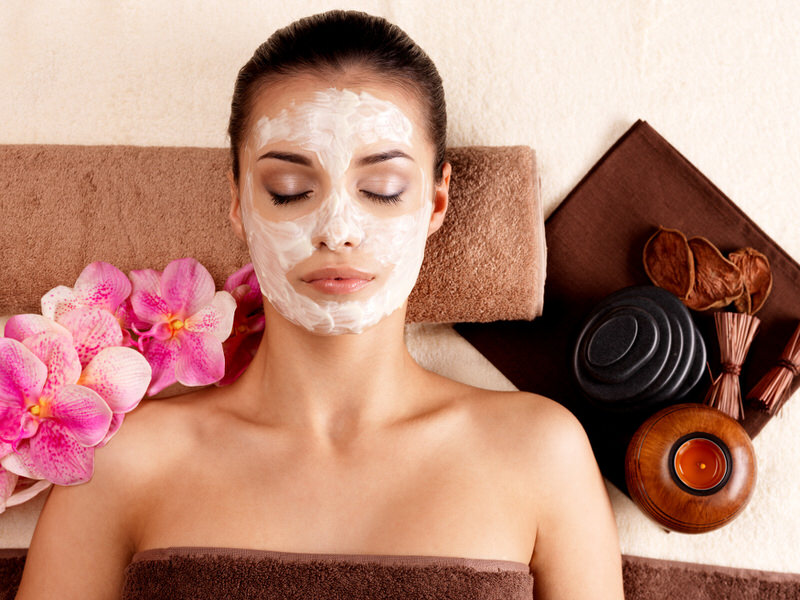Everyone wants to look good and stay with the current trends. And why not look better when you can? The cosmetic industry has just done exactly that. The industry is booming, and it has started to invest more and more in new technologies. One such advancement is how effective postbiotics are for our skin, and whether using postbiotics in cosmetics is healthy enough? The new buzzword is postbiotics, and you all must be wondering that we still haven’t fully known the probiotics. The world is moving fast, and this article will answer all the questions related to that.
Postbiotics are the latest entry in skincare products and is healthy and perhaps the most efficient way of dealing with your skin problems, according to the studies conducted so far. To understand how postbiotics work, you must first understand the skin’s microbiome and previously used biotics.
What is the role of the skin microbiome, and how does biotic help the skin?
The skin microbiome consists of all the microorganisms that live on and in the skin. It consists of both good and bad bacteria. It carries out various functions; some of them are:
Deals with skin infections: it battles with the foreign invade by crowding out the overgrowth of pathogens. It works pretty much like your gut.
Acts as a barrier: it stops harmful bacteria and other microorganisms from entering your body, and it keeps the good microorganism inside the body.
Protects against environmental damage: it provides a medium for blood clotting to take place and aids in the healing of wounds.
The microbiome can be affected by various factors such as:
Sulfates: The sulfates disrupt the environment, which then causes the good bacteria to go away. This results in an abundance of harmful bacteria compared to good bacteria in your body.
Age and lifestyle: As you grow older, it is natural for your skin’s microbiome to wear off slowly. Similarly, if you don’t follow healthy routines and don’t take good care of your skin, it will eventually affect your skin’s microbiome.
pH level: Your skin is generally acidic and has a pH level of around 5. This is the ideal pH level for good microorganisms to survive. If this pH level is disrupted, it can affect your skin’s microbiome.
The skin’s microbiome will inevitably be affected; to minimize its effects, biotics are used. There are three types of biotics- probiotics, prebiotics and postbiotics. Biotic help the skin to carry out its functions. It aids good bacteria in different ways.
What are probiotics?
It is the reintroduction of good bacteria on your skin. You might as well be familiar with it already as it is pretty much mainstream and is used in almost all cosmetic products, e.g. it is used in the commonly used yogurt masks. The best probiotic strains for your skin are:

Lactobacillus: According to studies, it enables the skin to produce more antimicrobial peptides, which is particularly effective in dealing with inflammation and skin barrier functions.
Bifidobacterium: It helps the skin to produce more ceramides which prevent water loss through the skin.
What are prebiotics?
Unlike probiotics, it is still a new name in cosmetics for skincare and depends on feeding the good bacteria on your skin, allowing them to thrive. It creates a good bacteria friendly environment and provides the essential nutrients for these bacteria. Items that have a prebiotics effect include:
- Magnesium
- Xylitol
- Glucomannan
- Rhamnose
What are postbiotics, and do they benefit the skin?
Postbiotics is the most advance and latest addition in the skincare industry. These are short-chain fatty acids and antimicrobial peptides. Rather than replanting the bacterial strains or feeding the strains to work, postbiotics supply the skin with these nutrients themselves from the start. It cuts down the period in which bacteria needs to develop and is best for immediate results.
The benefit of postbiotics is that, unlike probiotics, the bacteria do not need to be alive. The post biotics include enzymes, peptides, teichoic acids, peptidoglycans, polysaccharides, cell-surface proteins, or organic acids (such as lactic acid).
Postbiotics are generally a new concept in the beauty market; however, some researchers have shown that these biotic can help good bacteria grow and make your skin microbiome stronger. It can also penetrate your epidermis directly towards your skin cells, allowing them to carry out their biological functions efficiently.
Postbiotics are an essential for cosmetic products due to its anti-ageing properties, it enables the skin to look much clearer and fresh this makes it helpful if you are trying to improve your appearance, it also helps the skin against many infections such as:
- Acne
- UV-induced skin damage
- Hypersensitivity
- Eczema
An example of this is that your skin already has Lactobacillus, but we lose it with age. What postbiotics do is reintroduce their fermented version. By doing this, you are basically enjoying all the bacteria’s benefits without it actually being there. This pretty much explains how postbiotics are more efficient than any other biotic.
BifiDa- a postbiotic used in cosmetics
It is basically an extract from the Bifidobacterium. It is a relatively new ingredient in skincare products; however, it is super efficient and has given excellent results. Bifidobacterium is a good bacterium found on the skin, which helps the body to defend against pathogenic organisms. When it is fermented, it releases metabolites, and therefore BifiDa is rich in vitamins, lactic acid, minerals and proteins.
9 sources of postbiotics in food:
Yogurt: It is rich in postbiotics as well as probiotics. It can either be taken along with food or can be applied through a mask.
Soft cheeses: Common examples of soft cheese include ricotta and cream cheese. It can be taken in your food, and it is beneficial for your skin and your overall immune system.
Buttermilk: It is beneficial for its anti-aging properties as it is rich in postbiotic. For cosmetic reasons, it is one of the favorite ingredients in face wash. It can also be applied to your face by preparing a face mask. You can make a buttermilk face mask by mixing cream cheese in it.
Kefir: It can help remove the damaged skin caused by stress. In addition to the postbiotics, it also has probiotics in it.
Miso soup: Although it contains a large amount of salt, it is still safe to use for most users.
Sauerkraut: It is finely cut raw cabbage that has been fermented with various lactic acid bacteria.
Sourdough bread: It not only is good for your skin’s microbiome but is also a healthy alternative to white bread as it is more digestible and has lower phytate levels.
Pickles: Good healthy skin is directly related to digestion, and fermented foods are very beneficial for your skin. According to some studies, pickles can help solve some skin problems such as psoriasis and acne.
Tempeh: It is a traditional product used in Javanese cuisine. It is a soy product made from fermented soybeans.
Other benefits of postbiotics
Helps lower blood sugar levels and prevent obesity: Lack of microbe in the intestine has been related to obesity and insulin resistance. Postbiotics give precisely that.
Compliments probiotics: Post and probiotics work together to contribute towards human health. Probiotics produce postbiotics, and both of them are essential for your body.
Treats diarrhea: Century-old studies have constantly verified that probiotics and postbiotics protect the intestinal linings, helping the immune system and eventually is beneficial in treating and preventing diarrhea.
Summary
Postbiotics is a breakthrough entry in skincare products. Postbiotics does not have any health risks. It complements other biotics and is going to be the next big thing in cosmetic products. Postbiotics’ benefits are not just restricted to your appearance but also your health. Postbiotics help delay and sometimes solve almost all skin problems.


